The Sony a7R III was announced back in October 2017 and now less than two years later the Sony a7R IV has been announced.
I’ve been fortunate to own the a7R III since it was first available. I’ve mainly used it for the cropping power when shooting wildlife (My Borneo Adventure), but it’s a very versatile camera that can handle pretty much anything that you can throw at it.

I finally decided to add the a7R IV to my gear bag in October 2019, so am I happy with my decision?
Well before I answer that question let’s take a closer look at 15 key differences between the Sony a7R III and the a7R IV.
Contents Menu
- Sensor and Processor
- Image Quality
- Autofocus + Focus Frame Color
- Low Light Performance (ISO Sensitivity)
- In-body Stabilization (IBIS)
- Shutter Speed, Continuous Shooting and Buffer
- EVF and LCD Screen
- Dual UHS-II Memory Cards
- Video
- Body Design
- Menu System
- Pixel Shift
- Wi-Fi and Tethering
- Additional Differences
- Price
- Similar Features
- Which to Buy?
1. Sensor and Processor
Although both cameras share a similar BSI (backside illuminated) Exmor R CMOS sensor, the a7R III features a 42.4 megapixel sensor whereas the new a7R IV supports a massive 61 megapixels.

Sony says that the newly developed Exmor R CMOS image sensor exhibits high sensitivity and low noise, despite the extremely high pixel count of 61.0MP. If this is true then Sony will certainly be winning some praise.
APS-C Mode
If you are shooting with the a7R IV in APS-C mode then you’ll now get 26.2MP vs 18MP in the a7R III, this is higher than the 24.2MP found in the Sony a6400. This can be very useful for bird photography when you might want to crop in tightly on smaller birds.
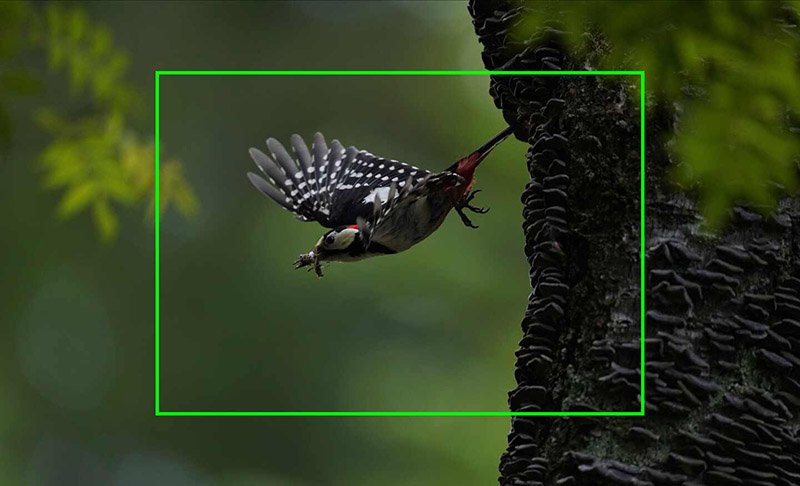
Aspect Ratios
In addition to the conventional aspect ratios of 3:2 and 16:9, the a7R IV also adds 4:3 and 1:1, whereas the a7R III only supports 3:2 and 16:9.
RAW Support
Both cameras support 14-bit RAW with compressed and uncompressed options.
2. Image Quality
It’s difficult to compare the image quality between the two cameras at this time, but with the brand new 61MP sensor in the a7R IV one would expect to see a small improvement. But I’ll be reserving judgement here until I’ve seen a variety of the same subjects shot side by side with each camera.
Sharpness settings for Jpegs have been expanded from +/-3 range on the a7R III up to +/-5 on the a7R IV.
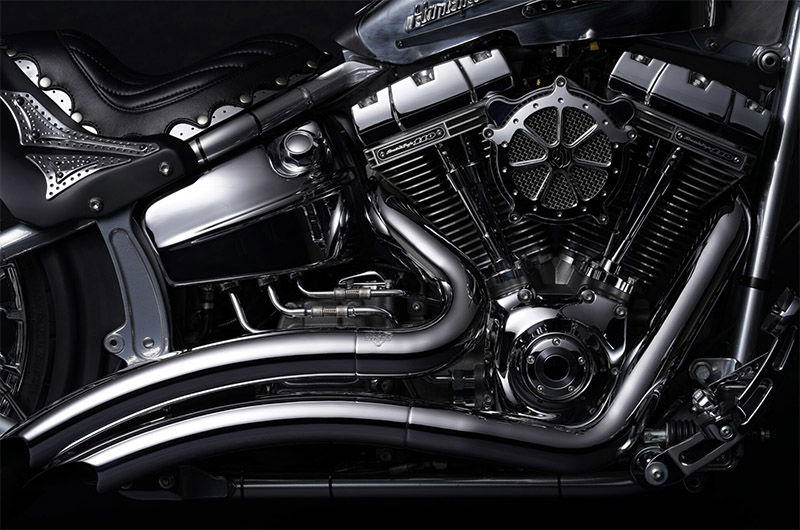
I’ll update this section as soon as more details are available, until then you can check out the image quality in the Sony a7R IV Sample Gallery.
3. Autofocus + Focus Frame Color Selection
A few members of the photography press who have had a brief hands-on with the a7R IV described the autofocus speed as similar to the a9, it turns out that this isn’t true.
I took my a7R IV and a9 to shoot red kites and compared the performance (video here). Once locked on the a7R IV tracks just as well as the a9, but the a9 still locks on to your subject roughly 3x faster than the a7R IV.
I’ve not yet done a similar comparison with the a7R III, but I don’t feel like there is a significant difference in AF performance.
The a7R IV features 567 phase detection points that cover approximately 74% of the sensor’s surface. The a7R III has 399 points covering approximately 68% of the sensor area. Both cameras have 425 contrast detection points in addition to the phase detection points.
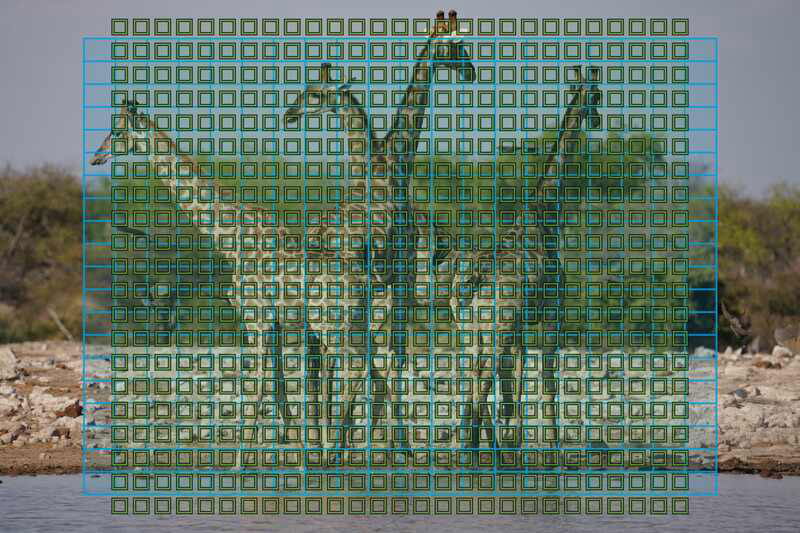
Real-time Tracking
Unlike the a7R III the new a7R IV also gets real-time tracking that can currently be found in only the a9 and a6400. This allows focus to be maintained automatically on your subject while the shutter button is half-pressed. The newly adopted Real-time Tracking algorithm uses color, pattern (brightness), and subject distance (depth) data to process spatial information.
Real-time Eye AF & L/R Eye Selection (Human/Animal)
Although the a7R III does feature Real-time Eye AF for both humans and animals, it does not allow you to specifying which eye (left/right) you would like to track. This feature can already be found in the Sony a9 (with the latest firmware) or the a6400 (with latest firmware).
The new a7R IV also allows you to choose whether to track the left or right eye (humans only). Both cameras support the auto option which for 99% of the time does a very good job.
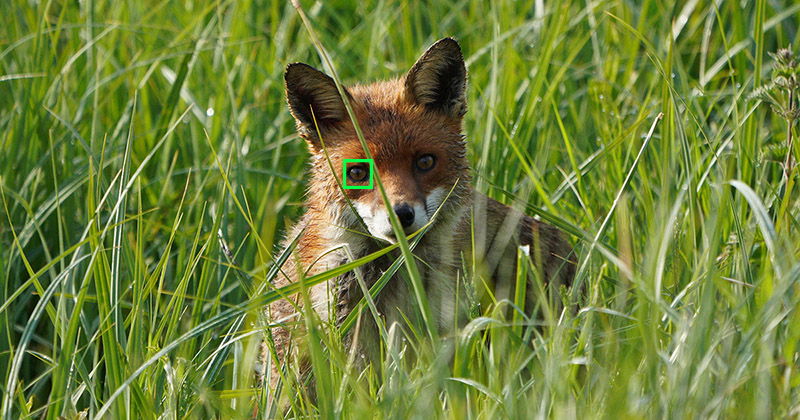
Eye AF in Movies
For the first time ever in an Alpha Camera the Sony a7R IV now also supports Eye AF when shooting movies.
PDAF Extended to F11
PDAF (Phase Detect Autofocus) only works down to f/8 with the Sony a7R III. The Sony a7R IV pushes this down to f/11 and in doing so allows you to make use of PDAF with the FE 100-400 F4.5-5.6 GM lens using both the FE 1.4 & 2x teleconverters or the new FE 200-600 F5.6-6.3 G lens with the 1.4 TC.
With the a7R III, when the aperture is greater than f/8 in continuous shooting mode, the focus is locked to the setting in the first shot. With the a7R IV, you can now shoot down to and including f/11 before the focus is locked to the settings in the first shot.
Focus Priority Aperture Drive
The a7R IV gets the same Focus Priority Aperture Drive option that can be found in the Sony a9. This changes the aperture drive system to prioritize auto-focusing performance. During continuous shooting using the electronic shutter, this allows you to continuously adjust the focus with an F-value greater than F11. This is only supported with the electronic shutter and not the mechanical shutter.
Focus Frame Color Selection
If you were never a big fan of the grey focus frame then you’ll be relieved to know that with the a7R IV you can now choose to display the focus frame in either white or red.
4. Low Light Performance (ISO Sensitivity)
The Sony a7R IV has improved low light shooting performance with autofocus sensitivity extended to -3 EV, which is a one stop improvement over the a7R III (rated to -2 EV).
Focus Priority in Aperture Drive also helps to achieve more accurate focusing in dim lighting when the aperture is stopped down (only with the electronic shutter).
Despite the higher megapixel count of the a7R IV the ISO sensitivity range remains the same with native values from 100 to 32000 and extended from 50 to 102400.
The only way to add additional pixels to the same 35mm sensor is by making the pixels smaller, so whilst the resolution goes up the light gathering capabilities of each pixel goes down. This is why the Sony a7S II and a7S III are low light powerhouses because the sensor is just 10MP and as a result the pixels are a lot larger and can suck in more light.
Up to around 3200 ISO both the a7R III and a7R IV have similar levels of ISO performance, but when you hit 6400 ISO the images from the a7R III start to look cleaner.
To see this for yourself I’d recommend taking a look at DPReviews’s Studio Shot Comparison Tool.
5. In-body Stabilization (IBIS)
Although both cameras feature in-body 5-axis image stabilization, the a7R IV features a refined image stabilization algorithm and redesigned mechanism to achieve up to a 5.5-step shutter speed advantage.
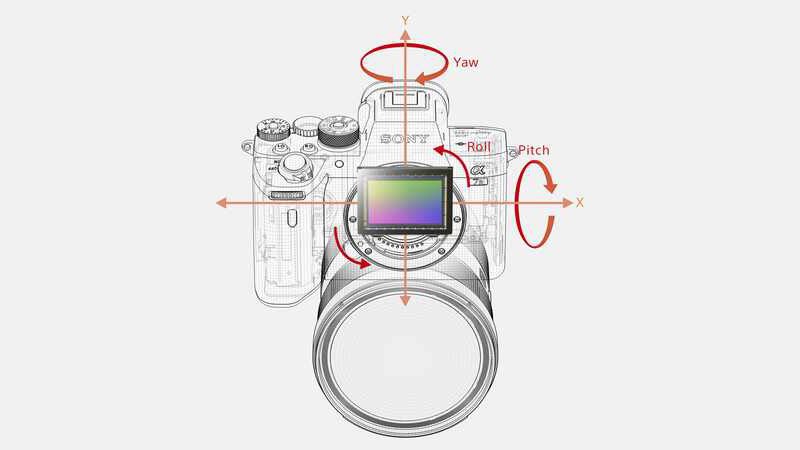
6. Shutter Speed, Continuous Shooting and Buffer
The maximum shutter speed remains at 1/8000 for both the mechanical and electronic shutter and the longest is 30 seconds before you need to switch into bulb mode.
Both cameras can shoot up to a maximum of 10 frames per second with either the electronic or mechanical shutter, but if you want live-view then you are still limited to 8 fps.
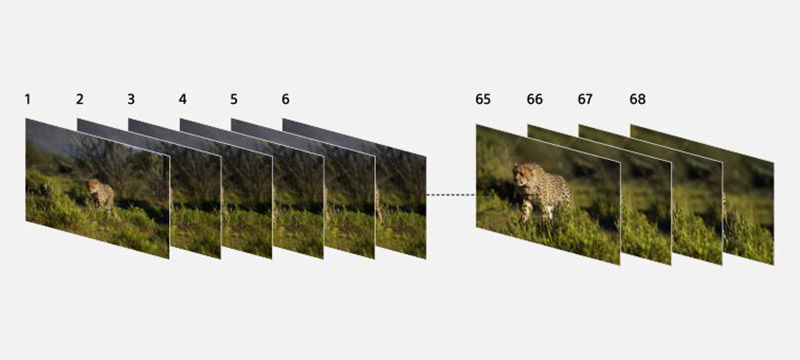
If you are shooting continuously then the buffer on the a7R III supports a maximum of 76 JPEG, 76 compressed RAW, or 28 uncompressed RAW images.
The Sony a7R IV buffer supports a maximum of 68 JPEG, 68 compressed RAW, or 30 uncompressed RAW images. However, switch the a7R IV to APS-C mode and you’ll now get approximately 3x this number!
7. EVF and LCD Screen
The a7R III features a 3.69 million dot OLED viewfinder with a refresh rate of 100/120fps.
However, the a7R IV boasts a massive 5.76-million-dot electronic viewfinder that reproduces fine detail with approximately 1.6 times higher resolution than a7R III. You can select “High” quality mode for high-precision yet natural realism while suppressing moiré and jaggies for better concentration.
The frame rate remains the same for both cameras at 120/100fps.
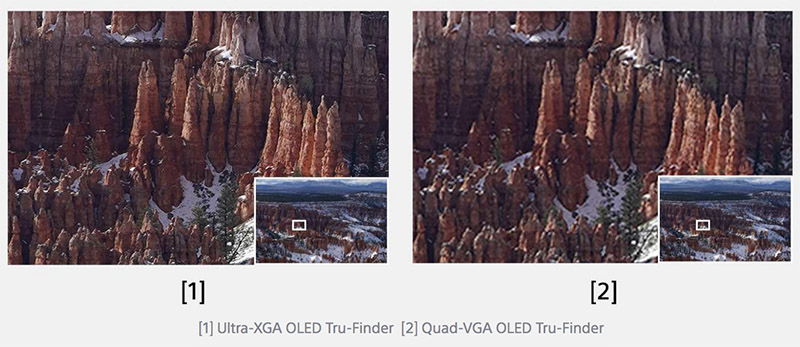
The rear LCD screens of both cameras remain the same with 1,440k dots, 0.78x magnification and touch controls for selecting and moving your focus point and zooming in. You can also adjust both LCD screens by approximately 107 degrees up and 41 degrees down.
The a7R IV does not feature a flip up screen to take selfies like with the a6400 I’m afraid. There is one improvement in the LCD on the a7R IV over the a7R III and that is a 1.5x improvement in response time according to Sony.
The EVF of the a7R III is already excellent so I’m looking forward to seeing the world through the new 5.76-million-dot EVF. As well as showing you a much more natural image this is also very beneficial for zooming in and checking that you have managed to nail the focus where you wanted to!
8. Dual UHS-II Memory Card Slots
Although the a7R III features two memory card slots, only one supports the faster UHS-II memory cards. Thankfully Sony have come to their senses and now both slots in the a7R IV are compatible with UHS-I and UHS-II memory cards for fast mass-volume data writing.
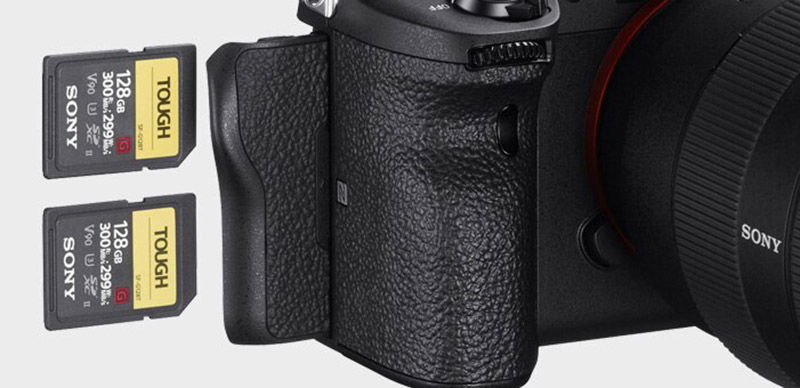
With the a7R IV there is also an increased number of camera settings that can be stored on the memory card, and saved settings can be read by other cameras of the same model. Up to 10 sets of camera settings can be stored to a memory card by using the Save/Load Setting function. Camera setups can also be imported to the Imaging Edge Mobile application.
9. Video
For the first time ever on an Alpha camera the a7R IV now supports Real-time Eye AF when shooting videos, this is not available on the a7R III. If you are using an external monitor and shooting in 4k you’ll now also get face recognition without any screen blackout.
Both the a7R III and the a7R IV can record 4K video at up to 30fps and 100Mbps with full pixel readout in the Super 35mm mode (approx. APS-C 16:9), without the need for pixel binning, but because the a7R IV has more pixels to play with the resulting movie is likely to be a little sharper.
When shooting videos in full-frame mode there is some line skipping on both cameras, it remains to be seen whether or not the increased resolution will impact the full-frame video quality.
Here’s a 4k movie shot on the a7R IV:
Both cameras support in-camera picture profiles, S-Log2, S-Log3 and a HLG (Hybrid Log-Gamma) profile for output to HDR TV’s without the need for color grading. They also both support Slow and Quick Motion (S&Q). This allows you to select between 1fps and 120fps for slow or fast motion clips.
According to Sony a refined Fast Hybrid AF system in the a7R IV achieves faster, smoother, more stable autofocus during movie recording. This reduces the need for manual focus adjustments when the camera is used on a gimbal or one-operator shooting situations.
The recording limit of 29 minutes and 59 seconds has been removed on the a7R IV.
I
The a7R IV has a new Multi Interface Shoe that features a built-in digital audio interface that allows direct connection of the new digital ECM-B1M Shotgun Microphone for clear, low-noise audio recording.

10. Body Design
The a7R III has never been the most comfortable camera to hold, thankfully Sony have been listening to their customers and the a7R IV features a larger grip that also provides more room for your fingers between the grip and larger lenses. Sony has also introduced a new battery grip (VG-C4EM) to fit the new camera body.

Not content with only changing the grip Sony has also redesigned and increased the size of the multi-selector (AF Joystick) along with a new textured surface to improve the grip. Response in all eight directions has also been improved. The AF-ON button has been enlarged making it much easier to use with gloves on.
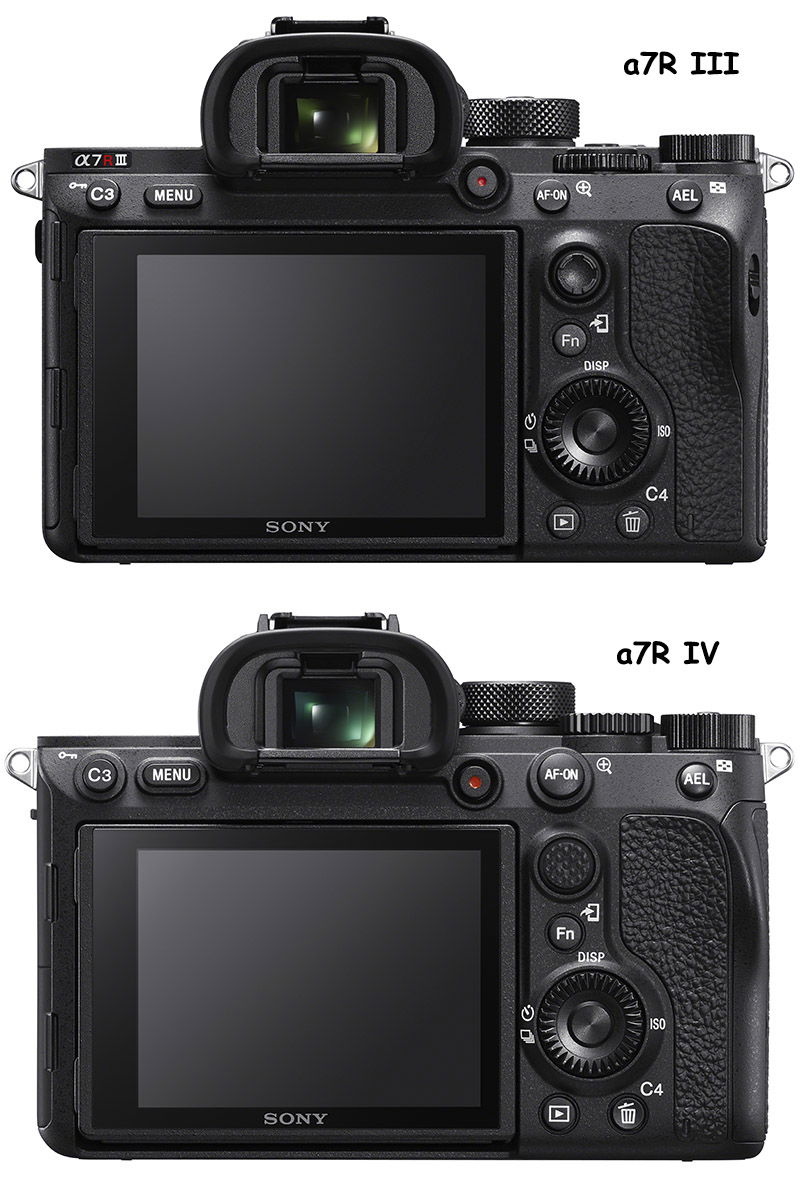
The exposure dial now features a lock release button that can be set to on for fast changes or off to prevent accidental, unwanted changes. The rear dial has also been re-designed and re-positioned and the shutter button now sits at an angle.
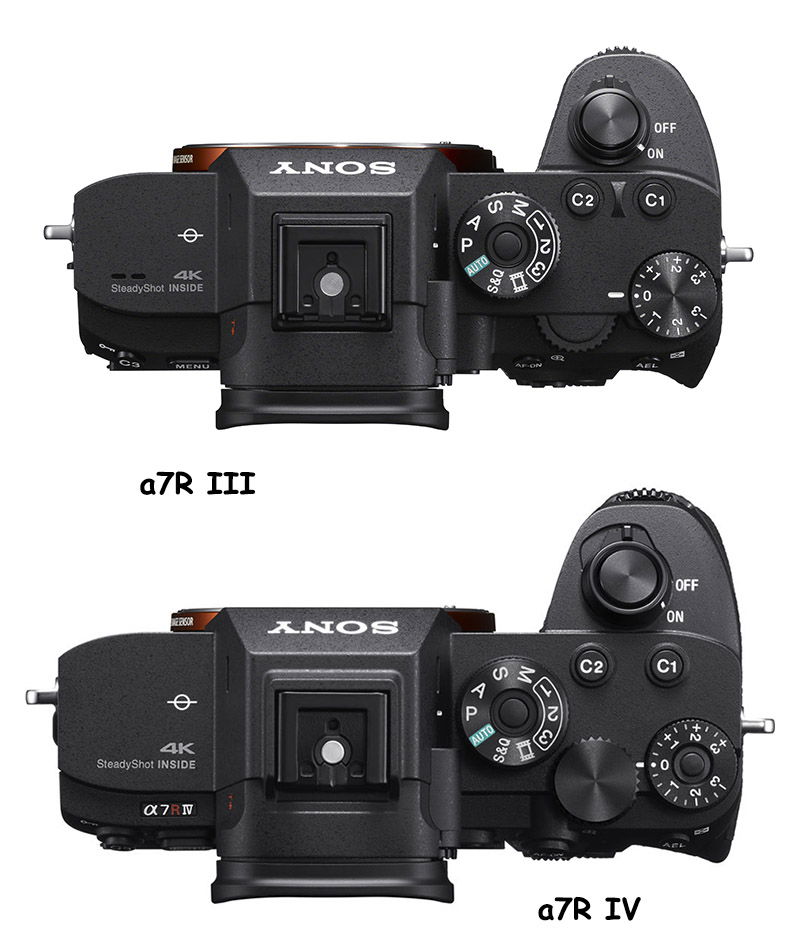
Dust and moisture resistance have been significantly improved with refinements throughout the body. Additional sealing is provided at all body seams as well as the battery compartment cover, and the media slot now has a double sliding cover rather than the previous hinged cover to keep water out. A redesigned lens lock button and additional cushioning around the mount further contribute to reliability in challenging outdoor conditions.
Here’s a look at the dimensions and weights (with battery and SD cards) between the two cameras:
a7R III: 126.9mm (w) x 95.6mm (h) x 73.7mm (d) – 657g
a7R IV: 128.9mm (w) x 96.4mm (h) x 77.5mm (d) – 665g
Despite the larger grip and buttons the a7R IV is only 8g heavier than the a7R III which is really quite remarkable.
11. Menu System
The a7R III certainly does not have the most intuitive of menu systems, thankfully there have been some improvements with the a7R IV.
The a7R IV now features both My Dial and My Menu features. My Dial lets you assign frequently used functions to the front/rear dials and the control wheel. Whilst My Menu allows registration of up to 30 different menu items for quick access to menu items you use often.

Normal menu navigation is easier too: the front dial or Fn button selects menu tabs, the rear dial selects sub-tabs, and the control wheel selects individual menu items. Separate Fn button functions can be assigned for the still and movie modes. Illustrated custom menu items also make it far easier to identify the functions assigned to each control.
12. Pixel Shift
We first saw Pixel Shift introduced in the a7R III. This feature basically takes 4 photos and shifts the sensor by 1 pixel in between. Then using Sony’s Imaging Edge software the images can be combined to create 1 image with the resolution of 4. The files that you end up with are still 42 megapixels in size, but they contain a lot more detail, especially noticeable when you zoom in 100%.
With the a7R IV Sony have taken this technology even further and it will now capture 16 full-resolution images. The camera then shifts the sensor in 1 or 0.5-pixel increments to capture 16 separate pixel-shifted images containing a total of 963.2 million pixels worth of data which is then composited into a 240.8 million pixels (19008 x 12672 pixels) image using the Imaging Edge desktop software.
Here’s a video from Sony demonstrating Pixel Shift in the new a7R IV:
The main advantage of Pixel Shift is increased color accuracy and sharpness, but only if your subject is perfectly still and your camera is on a very solid tripod, as the slightest movement will render the images useless. Product photography, architecture photography, and still macro photography are areas where Pixel Shift will really shine. Landscape photography not so much since there are most likely to be moving elements like clouds, flowing water, or the wind blowing things around etc.
13. Wi-Fi and Tethering
It’s now possible to tether the a7R IV to a computer and send RAW files via 2.4 GHz or 5 GHz Wi-Fi whilst shooting images in continuous mode with the camera and computer connected using Sony’s Imaging Edge “Remote” software application (Ver. 2.0 or later).
In addition to wirelessly connecting the camera directly to the computer, the connection can also be made via a wireless access point for compatibility with a variety of network environments
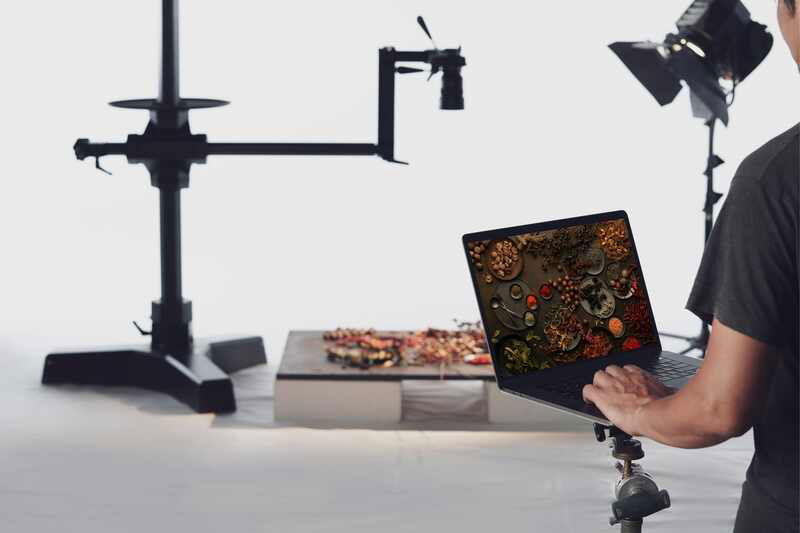
FTP functionality now supports background transfer that allows convenient Wi-Fi transfer of still image files to a specified remote FTP server. FTPS (File Transfer Protocol over SSL/TLS) is supported, allowing SSL or TLS data encryption for maximum security.
Additional improvements include the ability to specify files for transfer, the ability to specify a file format (JPEG/RAW), and more. The number of FTP servers that can be pre-registered has been increased from three to nine, and it is possible to set up folder configurations on the destination FTP server.
It is now also possible to transfer files from an SD card in the camera via Wi-Fi even if the camera power is OFF. Images to be transferred are selected via the Imaging Edge Mobile application installed on a on a mobile device. Movie files can also be transferred in this way.
A USB Type-C™ connector now support fast USB 3.2 Gen 1 data transfer. Efficient data handling both at the camera and computer ends of the connection results in transfer speeds approximately 2x faster than the a7R III.
14. Additional Differences
Here are a few additional differences between the two cameras that are worth mentioning:
- Multi Interface Shoe with Digital Audio Interface
The a7R IV Multi Interface Shoe now features a built-in digital audio interface that allows direct connection of the new digital ECM-B1M Shotgun Microphone or XLR-K3M XLR Adaptor Kit.
- Enhanced Peaking
The detection accuracy of the focus peaking function has been improved, and a blue peaking color has been added to the existing red, yellow, and white selections.
I’ll be adding to this list just as soon as I learn more about the new a7R IV.
15. Price (Body-Only)
Please note that prices vary between retailers and there are often special deals running throughout the year. These prices are therefore guide prices for comparison only, please check the latest prices and deals using my price check links at the end of this article.
Body only prices:
- The a7R III currently costs around: $2,798
- The a7R IV costs: $3,498
When the a7R III was launched the price was around $3300, so that makes a price increase of around $200 for the Mark IV.
The Same Features
Whilst there are most certainly many differences between these two megapixel power houses, there are also many features that they share in common, these include:
- 5-axis sensor stabilisation with 5.5 stops of compensation (although the a7R IV implementation has been improved upon)
- 10fps continuous shooting with AE/AF tracking
- 1/8000 maximum shutter speed
- Interval shooting
- Human and Animal Eye AF (Animal Eye AF added with latest firmware update)
- 4K video up to 30p and 100Mbps
- Full HD up to 120 fps
- 1.44M 3.0-in LCD
- NP-FZ100 battery
- Sony RMT-P1BT Remote Commander support
Which One to Buy?
Firstly if you need to take out credit to buy either camera I’d recommend considering a cheaper alternative like the Sony a6400 which is an amazing compact camera. Alternatively simply waiting until you have the funds available for the a7R III or IV. No camera purchase is worth getting into debt for unless your business relies on it and you are very confident that you will soon earn the money back.
That said, I have to admit to being quite impressed by the new features. As a wildlife shooter I can rarely get close enough to my subject, so having 61 MP at my disposal along with a 26 MP crop mode would be extremely valuable. The improved ergonomics and weather sealing are also a big plus.
With PDAF now extended to f/11 in the a7R IV this is also very beneficial, especially if shooting with the new 200-600mm F5.6-6.3 G lens with the 1.4 teleconverter since this takes you to f/9 which pushes the a7R III into contrast detection, and when shooting continuously the focus will be locked to the settings in the first shot, but not with the a7R IV.
If you don’t need the 61 MP sensor, are unlikely to be shooting continuously at apertures over f/8, and you are comfortable with the body of the a7R III and autofocus performance, then there’s probably no need to find the extra money to purchase the a7R IV over the a7R III or trade-up.
I have now purchased the a7R IV myself and my a7R III is starting to collect a little dust. Although I’m not seeing much difference in autofocus performance between the two, I actually appreciate the slightly larger body and buttons more than I expected to, especially in the winter months with gloves on. The new tracking modes also work very well and I’m using these quite often to keep track of my subjects, especially birds in flight.
I hope to do a more in-depth comparison between these two cameras very soon. Until then I hope this article is helpful.


Wow, one of the most detailed, clear and humane comparison review i have seen.
My favorite part:
No camera purchase is worth getting into debt for unless your business relies on it and you are very confident that you will soon earn the money back.
Readable and helpful, although I’m still undecided! My concern in the large file sizes of the iv. I have the A7Rii at the moment and managing storage is a consideration. Just as an interesting side note, I bought the 6400 for wildlife but have been disappointed with the image quality and have gone back to my A7Rii. Low light and resolution are really important to me, so I guess maybe this means the iv would be in line with my preferences…. interested also by your comment about the body size with gloved hands. I’ve noticed this a bit, but also like the size of my A7Rii. All the little things that matter when you are using something all the time!
The larger file sizes are certainly a shock at first and can place more demands on your computer and storage. I certainly have to be a lot stricter with culling images that I will never look at again. It might be worth waiting to see what the a7IV brings to the table which is rumored to be announced later this month. If the rumors are true then it will have a larger 33MB sensor, the AF should be faster than the R models and hopefully it will include the ergonomic improvements found in the a7R IV body as well. It should also be cheaper. I guess it depends how much you need those additional megapixels.
Trust me, I have the A7r2 it was good. But when I got my A7r3, it’s a totally different system, focusing was better, faster, accurate (esp eye), colors more natural instead of yellowish. It’s worth an upgrade now I’m into A7t4… again… it gets better and better
Hey thanks man. You helped me figure out what camera I want to get. I made the decision to get the Sony a7R IV now. This really helped.
Glad that it helped you out Dezirae. Hope you are already enjoying the new camera! 🙂
Hi Tim, This is a great review and really helpful. Recently I also joined Alphashooters facebook group and I love sharing pictures there. I have A9 and 200-600 G lens as well as 100-400 GM lens. I love this combination but I miss higher megapixels. Is it worth considering A7R4 in 2021 or wait for Sony to release A7R5 with slightly less Megapixel camera which will result in less noise ??
Thank you Aditya. The a9 and a7R IV make a great combination. I use my a7R IV a lot for wildlife, but if I’m shooting very fast and small birds then I’d grab the a9. You’ll always have more noise to deal with when you have more megapixels, there’s also the tendency to crop heavier which also highlights the noise, but programs like Topaz Denoise do an excellent job of cleaning this up with just a couple of clicks. I expect there will be an a7R IV at some point, but whether that will be this year or next I don’t know. There are numerous focus issues with the a7R IV + 200-600 which seem to affect around 20% of people, luckily my a7R IV + 200-600 play nicely together. If you are not in any rush then it might be worth waiting a little longer for the inevitable a7R V.
Sony A7R V Rumored Specification
Alpha 7R V: GBP 3800 / USD 3,500
BIONZ XR processor ISO 40-81920 (Native 80-32000)
61 million pixel Exmor R sensor
759 point PDAF Real-time tracking, eye focus for birds/animals/humans
26 million pixels APS-C mode 10fps continuous shooting
5.5-speed five-axis anti-shake
9.44 million pixel EVF
2.36 million pixel foldable LCD screen
New menu Dual CFE-A/SD compatible card slots
10Bit HEIF photo support Lossless compression of RAW photos support
The shake mode has been updated to four types (2 photos/4 photos/8 photos/16 photos) (not determined yet)
Support for 16Bit RAW photos
Full frame oversampling 8K/24p, 4K/24p video. Super35 super-sampled 4K/30p video 1.24x crop mode 4K/60p video XAVC HS/S/SI encoded video,
color depth up to 10Bit 4:2:2
Hi. I am buying my first full frame camera. I am undecided on A7Riii or iv. I am leaning towards iv. I want to shoot landscape/wildlife. I want to explore macro as well. Is the IV overkill?
Hi Gordon. It’s hard to go wrong with either camera. Like I’ve mentioned in the article the IV supports phase detection up to f/11 so if you ever plan to use the 200-600 + 1.4x then it would be best to go with the R IV. The R IV grip is a little larger and I appreciate the larger buttons, especially in colder weather when I’m wearing gloves. I know it’s not an easy choice, if you have the money then I’d go with the R IV, if not then you are unlikely to be disappointed with the R III as I certainly haven’t been since I’ve owned it.
Thanks for you comparison here. Really great work.
I have a little comment. Sorry if it is not the right forum, but I just don’t find anyone talking about the below issues.
I have been a Fuji shooter for many years, and before I turned to Sony (A9mk2 plus A7R4), I tested both Nikon and Canon (for press photography) and Leica Q (for reportage). Even though the Sonys have EVFs with higher resolution, the EVFs on the four other brands are much clearer when you shoot. The only brand where I experience aliasing and tearing in the EVF is on the Sonys. And the resolution in the EVF of the Sonys drops the moment you press the shutter release button half way down, which I find really annoying. No other brand does this.
By the way – Am I the only one who miss a smaller AF point on the Sonys? All the other brands have that, making high precision AF and shooting through fences etc a lot easier.
Stay safe
Klaus
H Klaus. Thanks for your comment. I can’t comment on the EVF’s from other cameras as I don’t have any experience with them unfortunately, although I do here some complains about Sony’s EVF they are normally from shooters who are used to optical viewfinders. I’ve not noticed a reduction in resolution when I half-press the focus button (I just did a quick test to check). You can change the focus point to small if you wish, just not sure how small you want to go? If I’m shooting through fences I’ll normally just set the focus distance limiter on the lens (when available) to something like 1m to infinity then I don’t usually have issues here, and with focus tracking you can lock on and there’s no need to refocus and risk bringing the fence into focus. Stay safe too! Tim
Hi Timothy. Thanks for your reply. I have been a professional shooter for 25 years, and I have had my Canons, my Nikons and my Leicas (shooting film on all of them before things got digital). Because of that, I was very skeptical about the EVFs on the mirrorless, when that era began. The reason why I turned to Fuji was, among others, the quality of their EVFs. The X-T1 had a little lag, but that was fixed on the X-T2. However, I missed my fullframe, and before I chose Sony, I tried out Nikon Z7 and Canon EOS R. I have also tested Leica Q/Q2, but they don’t suit my needs. But Sony is the only mirrorless camera I have tried that has this resolution drop (Fuji and Olympus don’t have it either). To me it is really annoying, and the photographic experience is not at all on par with other systems due to that drop in resolution.
Regarding the smaller AF point – my primes don’t have a focus limiter function. I just need a smaller AF point. It took me a few years to convince Fuji, that they should implement a smaller point. Finally they did it, and people are very satisfied about it. And – for what is it worth – there is a reason why all other brands have included the option for a smaller AF point 😉
Take care
Klaus
Well replacing the microphone/headphone port is now a 20min in the field job for heavy video shooters.
Sad to see nothing about the optical filter stack and its coatings on here since that was a major issue with the RIII.
Also Pricing provided is not accurate unless Amazon/B&H/Adorama is the only provider’s witch they are not the majority of people won’t touch them for new gear beyond the 500 mark because of its not market value its MSRP value.
The current values of the
A7RIII new is 1700GBP or 2000USD (300-500 less on the used markets)
A7RIV is 2300GBP and 2500-3000USD new right now.
Did you find the RAW color rendition of A7Riv better than A7Riii? This is an important issue in Sony vs Nikon/Canon.
Thank you.
Art
Hi Art, I’ve not really noticed a big difference in colors between my a7R III and a7R IV when shooting RAW. Although this is certainly a very subjective topic!
Great review! Nice comparison. Thanks so much
Thanks Son. Glad that you found it helpful!
thanks for the review, does articulate the difference between A7Riii and A7Riv nicely. As a wildlife shooter , I am alsp looking forward to the 61 Mpx and real time tracking. I just received the 600 GM and 200-600 lens and waiting for A7Riv and may be A9ii soon, sony is not helping with my GAS this year.Again, thank you for the nice review of specs and definitely helped me .
Thank you Mukesh. Sounds like you have a very nice collection of cameras and glass! I may trade my a7R III for the IV at some point, but will wait for the first price drops 🙂 Looking forward to seeing more of your shots in the wildlife group 🙂
Fantastic review, I now have an A7RIV on pre-order
Glad that you found the comparison helpful Greg. I’m very jealous of your pre-order! I’ll definitely be picking one up at some point, but not before I’ve sold a boat load of gear! Enjoy the a7R IV when it arrives! 🙂